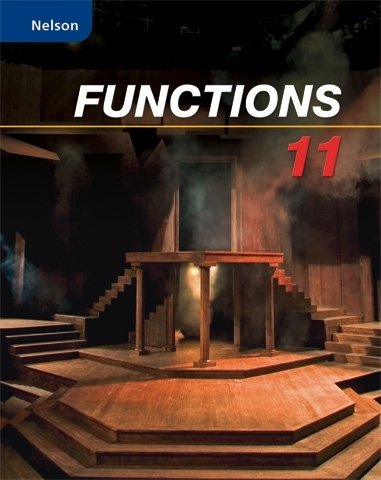
All Solutions
Section 7-3: Creating Rules to Define Sequences
$t_1=t_7=1$
$t_2=t_8=5$
$t_3=t_9=4$
$t_4=t_{10}=-1$
$t_5=t_{11}=-5$
$t_n=t_{n+6}$
$N=1+(n-1)(1)=n$
The denominators D form an arithmetic sequence with $t_1=2$ and $d=1$.
This can be written as
$D=2+(n-1)(1)=n+1$
Therefore, the original sequence has a general term of
$$
t_n=dfrac{N}{D}=dfrac{n}{n+1}
$$
t_n=dfrac{n}{n+1}
$$
$t_n=t_1+(n-1)d$
$t_n=3+(n-1)(2)$
$$
t_n=2n+1
$$
$$
t_n=4+(n-1)(3)=3n+1
$$
$$
t_n=2(n^2+n)=2n^2+2n
$$
for a row of 4 triangles: $3(4)+1=12$
for $4times 4$ square grid: $2(4)^2+2(4)=40$
b.) $t_n=3n+1$
c.) $t_n=2n^2+2n$
d.) 12 ; 40
(1) When $n$ is even, $t_n$ is positive, and $t_n$ is half of $n$.
(2) When $n$ is odd, $t_n$ is non-positive, and $t_n$ equals $-t_{n-1}$.
{text{We can write this mathematically as}} hfill \
{t_n} = left{ {begin{array}{*{20}{c}}
{frac{1}{2}n,,,,,{text{if }}n{text{ is even}}} \
{,, – frac{1}{2}left( {n – 1} right){text{ if }}n{text{ is odd}}}
end{array}} right. hfill \
end{gathered} ]
so it will follow $t_n=-dfrac{1}{2}(n-1)=-dfrac{1}{2}(12;345-1)=-6172$
a.),,{t_n} = left{ {begin{array}{*{20}{c}}
{frac{1}{2}n,,,,,{text{if }}n{text{ is even}}} \
{,, – frac{1}{2}left( {n + 1} right){text{ if }}n{text{ is odd}}}
end{array}} right. hfill \
b.),,{t_{12345}} = – 6172 hfill \
end{gathered} ]
(1) The first term appears to be arithmetic with $a_1=x$ and $d=x$
Thus, $a_n=x+(n-1)(x)=nx$
(2) The second term appears to be geometric with $g_1=dfrac{1}{y}$ and $r=dfrac{1}{y}$
Thus, $g_n=dfrac{1}{y}cdot left(dfrac{1}{y}right)^{n-1}=dfrac{1}{y^n}$
$t_n=a_n+g_n$
$$
t_n=nx+dfrac{1}{y^n}
$$
t_n=nx+dfrac{1}{y^n}
$$
(1) The numerator appears to be geometric with $t_1=3$ and $r=dfrac{21}{3}=7$
Thus, $t_n=3cdot 7^{n-1}$
(2) The denominator appears to increasing repeating digits of 5. To obtain the general term, we must examine the origin of the repeating digits. Observe that
$dfrac{5}{9}cdot 9=5$
$dfrac{5}{9}cdot 99=55$
$dfrac{5}{9}cdot 999=555$
Meanwhile,
$9=10-1$
$99=100-1$
$999=1000-1$
Thus, we can see a pattern that $t_n=dfrac{5}{9}(10^n-1)$.
$$
t_n=dfrac{3cdot 7^{n-1}}{dfrac{5}{9}(10^n-1)}
$$
t_n=dfrac{3cdot 7^{n-1}}{dfrac{5}{9}(10^n-1)}
$$
Notice that
$9=2(4)+1$
$19=2(9)+1$
$39=2(19)+1$
$t_n=2cdot t_{n-1}+1$
Using this recursive formula, we can solve the next three terms as
$t_6=2(79)+1=159$
$t_7=2(159)+1=319$
$$
t_8=2(319)+1=639
$$
Knowing that $t_5=90$ and $t_6-t_5=-5$
$t_6=90-5=85$
$t_7=85-6=79$
$$
t_8=79-7=72
$$
Knowing that $t_8=21$ and $t_7=13$
$t_9=21+13=34$
$t_{10}=34+21=55$
$$
t_{11}=55+34=89
$$
$2,;5,;2,;12,;2,;26$
Observe that when $n$ is even, the difference between the term preceding it is 2, thus,
for even $n$, $t_n=t_{n-1}+2$
If $n$ is odd, $t_n$ is two times the term preceding it, this means,
for odd $n$, $t_n=2cdot t_{n-1}$
Knowing that $t_7=52$, we can obtain the next three terms as
$t_8=t_7+2=52+2=54$
$t_9=2cdot(54)=108$
$$
t_{10}=108+2=110
$$
$t_6=-6^3=-216$
$t_7=7^3=343$
$$
t_8=-8^3=-512
$$
$t_1=6$
$t_2=2(6)+1=13$
$t_3=2(13)+1=27$
$t_4=2(27)+1=55$
Thus, the recursive formula is $t_n=2cdot2t_{n-1}+1$
We can then calculate the next three terms as
$t_5=2(55)+1=111$
$t_6=2(111)+1=223$
$$
t_7=2(223)+1=447
$$
For 2 ,1
Compare 2 and 1 $implies$ 1,2
Compare 1 and 2 $implies$ Leave as is
A sequence of 2 numbers requires 2 comparisons.
For 3, 2, 1
Compare 3 and 2 $implies$ 2, 3, 1
Compare 3 and 1 $implies$ 2, 1, 3
Compare 2 and 1 $implies$ 1, 2, 3
Compare 2 and 3 $implies$ Leave as is
Compare 1 and 2 $implies$ Leave as is
Compare 2 and 3 $implies$ Leave as is
A sequence of 3 numbers requires 6 comparisons
Compare 4 and 3 $implies$ 3, 4, 2 ,1
Compare 4 and 2 $implies$ 3, 2, 4, 1
Compare 4 and 1 $implies$ 3, 2, 1, 4
Compare 3 and 2 $implies$ 2, 3, 1, 4
Compare 3 and 1 $implies$ 2, 1, 3, 4
Compare 3 and 4 $implies$ Leave as is
Compare 2 and 1 $implies$ 1, 2, 3, 4
Compare 2 and 3 $implies$ Leave as is
Compare 3 and 4 $implies$ Leave as is
Compare 1 and 2 $implies$ Leave as is
Compare 2 and 3 $implies$ Leave as is
Compare 3 and 4 $implies$ Leave as is
A sequence of 4 numbers requires 12 comparisons
The algorithm would be
Compare 5 and 4 $implies$ 4, 5, 3, 2, 1
Compare 5 and 3 $implies$ 4, 3, 5, 2, 1
Compare 5 and 2 $implies$ 4, 3, 2, 5, 1
Compare 5 and 1 $implies$ 4, 3, 2, 1, 5
Compare 4 and 3 $implies$ 3, 4, 2, 1, 5
Compare 4 and 2 $implies$ 3, 2, 4, 1, 5
Compare 4 and 1 $implies$ 3, 2, 1, 4, 5
Compare 4 and 5 $implies$ Leave as is
Compare 3 and 2 $implies$ 2, 3, 1, 4, 5
Compare 3 and 1 $implies$ 2, 1, 3, 4, 5
Compare 3 and 4 $implies$ Leave as is
Compare 4 and 5 $implies$ Leave as is
Compare 2 and 1 $implies$ 1, 2, 3, 4 ,5
Then the algorithm would make 7 more comparison with no changes and stop.
So to sort 5 numbers requires 20 comparisons.
2, 6, 12, 20
Neither common difference nor common ratio exists so we must find another pattern.
Observe that
$n = 2 implies 2times 1= 2$
$n = 3 implies 3times 2= 6$
$n = 4 implies 4times 3= 12$
$n = 5 implies 5times 4= 20$
We see that the pattern is
$t_n=n(n-1)$
Therefore, for $n=100$, the number of comparisons for this algorithm is
$$
t_{100}=100(100-1)=9900
$$
$t_1=2$
$t_2=5(2)+1=11$
$t_3=5(11)-1=54$
$t_4=5(54)+1=271$
$t_5=5(271)-1=1354$
$t_6=5(1354)+1=6771$
{text{We can write this mathematically as}} hfill \
,,{t_n} = left{ {begin{array}{*{20}{c}}
{,,5{t_{n – 1}} + 1,,,,{text{if }}n{text{ is even}}} \
{5{t_{n – 1}} – 1{text{ if }}n{text{ is odd}}}
end{array}} right. hfill \
end{gathered} ]
$t_7=5(6771)-1=33854$
$t_8=5(33;854)+1=169;271$
$t_9=5(169;271)-1=846;354$
$$
t_{10}=5(846354)+1=4;231;771
$$
,,{t_n} = left{ {begin{array}{*{20}{c}}
{,,5{t_{n – 1}} + 1,,,,{text{if }}n{text{ is even}}} \
{5{t_{n – 1}} – 1{text{ if }}n{text{ is odd}}}
end{array}} right. hfill \
33,854,,,169,271,,,846,354,,,4,231,771 hfill \
end{gathered} ]
$t_1=1$
$t_2=dfrac{5}{2}(1+1)=5$
$t_3=dfrac{5}{2}(5+1)=15$
$t_4=dfrac{5}{2}(15+1)=40$
$t_5=dfrac{1}{2}(40)=20$
$t_6=dfrac{1}{2}(20)=10$
$t_7=dfrac{1}{2}(10)=5$
$$
t_8=dfrac{5}{2}(5+1)=15
$$
Therefore $t_{1000}=20$
t_{1000}=20
$$
For instance, $3,;7,;3,;7,;3,;7…$, the general term would be
$t_n= 3$ if $n$ is odd
$t_n=7$ if $n$ is even.
Thus, sequences like
$1,;2,;1,;2,;1,;2,;1$
or
$5,;10,;5,;10,;5,;10$
would fit this description.

